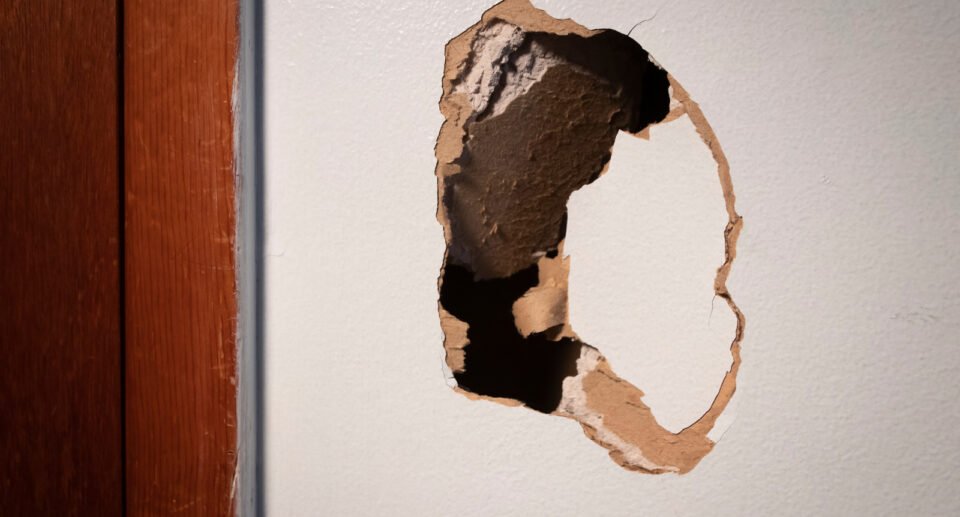How to Unlock a Door Without a Key: Tips and Videos

Locking oneself out of a room or home can be a challenging situation. Fortunately, there are various methods to unlock a door without a key, which, if performed carefully, can grant re-entry without permanent damage to the door or lock. Understanding the type of lock and the workings of its mechanism is the first step in identifying the most appropriate technique for unlocking. Utilizing common household items like plastic cards or improvised tools can often provide a non-destructive solution to the problem.
Safety should be a prime consideration to avoid damaging the door or injuring oneself. Some non-destructive entry methods include lock picking, using a bump key, or exploiting weaknesses in the lock design. However, destructive techniques should be used only as a last resort when other methods fail, as they can damage the lock or door. It is also important to recognize when it is time to call a professional locksmith, who can unlock the door without compromising its security for future use.
Key Takeaways
- Various techniques can unlock doors without keys utilizing household items.
- Non-destructive methods should be attempted before considering destructive techniques.
- Professional assistance is recommended when DIY methods are ineffective.
Understanding Door Lock Mechanisms
When attempting to unlock a door without a key, one must understand the inner workings of a door lock mechanism. In particular, the pin tumbler lock is a common type of lock, and knowledge of its components is essential for appreciating how locks can be opened without a key.
Components of a Pin Tumbler Lock
The pin tumbler lock includes several key components:
- The cylinder, often referred to as the lock body, is the part of the lock where the key is inserted.
- Key pins, which vary in length, are the pins that make contact with the key when it is inserted.
- Driver pins sit above the key pins and are held in place by springs, which keep them in the locked position until the correct key is inserted.
- The shear line is a physical point within the lock cylinder where the key pins and driver pins align perfectly when the correct key is inserted, allowing the lock to turn.
Lock Cylinder Structure
The structure of the lock cylinder is critical to the lock’s function:
- Keyway: This is the part of the lock where the key is inserted. It is designed to prevent unwanted objects from being inserted into the lock.
- Cylinder: The cylinder houses the keyway and contains a series of chambers that hold the key pins and driver pins.
The Role of the Deadbolt
An essential component for door security is the deadbolt:
- Deadbolt: A locking mechanism distinct from the spring bolt lock because it cannot be moved to the open position except by rotating the lock cylinder with the correct key.
- It is typically secured with screws into the door frame, making it a robust means of securing a door.
Understanding these components and their roles is crucial for anyone wishing to unlock a door without a key, as they form the basis of most traditional locks found in homes and many commercial properties.
Preparation and Safety Measures
When attempting to unlock a door without a key, one’s foremost considerations should center on understanding the context of the situation and upholding stringent privacy and security protocols. These preliminary steps are crucial for a safe and responsible approach.
Assessing the Situation
Before engaging in the process, it is imperative to evaluate the urgency and legitimacy of the need to access the locked space without a key. This involves determining if the situation is an emergency, such as being locked out of one’s own home without alternate entry methods available. The individual should confirm they have legal authorization to enter the premises to prevent any potential legal repercussions.
- Emergency Situation: If it’s an emergency, prioritize finding immediate, safe methods while considering the assistance of professionals.
- Non-emergency Situation: If there’s no immediate risk, one may consider more time-consuming methods that are less likely to damage the lock or door.
Ensuring Privacy and Security
Maintaining privacy and security is paramount when bypassing a lock. The individual should make privacy a priority by ensuring no sensitive information or access is compromised during the process.
- Visual Privacy: Assure no unauthorized individuals can observe the unlocking process to reduce the risk of replicating the method for malicious intent.
- Security Measures: Post-unlocking, it is advisable to address potential security weaknesses that the unlocking process may have highlighted.
Action Purpose Monitor Keep watch for any suspicious activity around the premises. Replace or Upgrade Locks Strengthen security measures to prevent unauthorized access in the future.
Responsible actions and a considerate approach ensure personal safety and uphold the security of the property at all times.
Non-Destructive Entry Methods
When one finds themselves locked out of a room, there are several non-destructive techniques they can use to regain entry without the need for a key. The methods listed below require varying levels of skill, but all aim to unlock a door without causing damage to the lock or the door itself.
Using a Credit Card
One can use a credit card or similarly shaped plastic card as a tool for unlocking a spring bolt latch. This method involves sliding the card between the door frame and the latch. Gentle pressure is applied until the latch is pushed back into the door, allowing it to open.
Picking a Lock with Bobby Pins
Bobby pins can be fashioned into improvised lock picking tools. To pick the lock, one pin is bent to form a pick, while another is used as a tension wrench. Inserting the improvised tension wrench into the bottom of the keyhole to apply pressure, then using the pick to manipulate the pins inside the lock can unlock it.
Paperclip Lock Picking
Locks can also be picked with a bent paperclip. Like bobby pins, paperclips must be molded into a pick and a tension wrench. Inserting the makeshift tension wrench to hold tension on the barrel and carefully raking the paperclip pick inside against the lock pins may unlock the door.
Unlocking with a Screwdriver
A flathead screwdriver can serve as a useful tool for dealing with privacy locks often found in interior doors. The screwdriver is inserted straight into the lock and turned like a key. These locks are typically simple and lack the security features of entrance locksets.
Bump Key Technique
Using a bump key, which is a key filed to fit the general shape of a lock’s keyway, can unlock a pin tumbler lock. By inserting the bump key and applying slight turning pressure while gently striking the key towards the lock, one can cause the pins to jump and turn the barrel. A lock pick set may sometimes include a bump key specifically designed for such tasks.
Destructive Entry Techniques
When other methods of unlocking a door without a key are impractical or impossible, a person may resort to destructive entry techniques. These methods will damage the lock or door, and should be used as a last resort when access is absolutely necessary.
Using a Drill
To bypass a door’s lock mechanism, especially when dealing with deadbolts, a drill can be employed to destroy the lock cylinder. The person carrying out this task should use a drill bit that is the appropriate size for the lock being targeted. The drill should be positioned at the top of the keyhole and driven straight through the pins inside the lock cylinder. Once the pins are broken, the lock can be turned with a flat-head screwdriver, and the door will unlock. This method requires caution and can be noisy.
- Tools needed: Power drill, drill bits, flat-head screwdriver.
- Steps:
- Select a drill bit slightly larger than the lock’s keyway.
- Carefully align the drill bit with the top of the keyhole.
- Begin drilling slowly, applying steady pressure.
- Drill through the pins until the cylinder can turn.
- Insert the flat-head screwdriver and twist to unlock the door.
Forcing a Door with a Hammer or a Knife
Another method involves the use of a hammer or a knife to either dismantle the lock or force the door open. Using a knife, one might slide the blade between the doorframe and the lock, then wiggle and push to force the latch back into the door. This technique is less effective on deadbolts. When using a hammer, one can attempt to knock the doorknob off or break the lock mechanism entirely. This approach is more forceful and may cause considerable damage to the door and frame.
- Tools needed: Hammer or heavy knife.
- Hammer technique:
- Aim at the base of the doorknob or lock.
- Strike firmly to dislodge or break the lock mechanism.
- Knife technique:
- Insert knife blade between the door and the frame near the latch.
- Use a wiggle and push motion to retract the latch from the strike plate.
Applying these destructive techniques should only be considered when one has the right to access the property and other means of entry are not viable. It is advised to consult a professional before attempting these methods, as they can carry legal and safety implications.
When to Call a Professional
When a lockout situation arises, and one cannot gain entry to a property, a professional locksmith should be called. They possess the necessary tools, skills, and legal authorization to perform lock-opening services without damaging the property.
Locksmith Services
Locksmiths offer various services to address lockout scenarios. Time is critical; therefore, calling a locksmith is advisable when:
- The lock mechanism is complex or high-security, which makes amateur attempts at unlocking ineffective.
- Tools required for unlocking are unavailable, and improvising could cause harm or damage.
- Legal concerns arise such as needing to provide evidence of entry for insurance or rental purposes.
A professional locksmith not only gains entry but ensures the process is done securely and legally.
Post-Entry Lock Replacement
After gaining entry without a key, lock integrity may be compromised. Considerations for lock replacement include:
- Ensuring the safety and security of the premises if the keys are lost or in unknown hands.
- Upgrading to a higher security lock to prevent unauthorized entry in the future.
Locksmiths can provide expert advice on the best replacement locks and carry out the installation swiftly to restore security to the property.
Alternative Unlocking Solutions
When locked out of a room without a key, one can consider non-destructive methods such as manipulating hinge pins or creating a substitute key.
Manipulating the Hinge Pins
To remove a door from its frame without opening it, one might focus on the hinges. A common tool for this is an Allen wrench or a small screwdriver. One would first inspect the hinges for paint or trim that might need to be cleared away. Then, inserting the tool under the head of the hinge pins and gently tapping with a hammer can dislodge the pins. Once removed, the door can be taken out of the frame.
- Tools Needed: Allen wrench or small screwdriver.
- Steps:
- Clear any paint or trim.
- Insert tool under the hinge pin.
- Tap gently to dislodge and remove pin.
Note: This method preserves the integrity of the lock and is a preferred approach in emergency situations where property damage is to be avoided.
Creating a Substitute Key
In cases where picking the lock is not an option, fabricating a substitute key may provide access without the original key. One can use items like a Spam Key—the tool for opening canned foods—as a makeshift key for certain types of locks. The objective is to insert the substitute into the keyway and attempt to turn the lock mechanism, similar to how a key would.
- Tools Needed: Spam Key or similar device.
- Steps:
- Insert the substitute key into the keyway.
- Apply gentle pressure to turn the lock mechanism.
Maintenance and Prevention
To ensure door locks function properly and to prevent unauthorized access without a key, homeowners should engage in regular lock maintenance and consider installing security features like anti-bump devices.
Regular Lock Maintenance
Regular maintenance of door locks is essential for smooth operation and longevity. Homeowners should:
- Inspect: Regularly check locks for signs of wear, damage, or tampering.
- Clean: Use a mild soap and water mixture to clean lock exteriors, drying thoroughly to prevent rust.
- Lubricate: Apply graphite-based lubricant to the moving parts of the lock annually to ensure smooth key insertion and turning.
- Tighten: Make sure screws holding the lockset are tight to prevent the lock from becoming loose.
By maintaining locks, individuals minimize the risk of lockouts and enhance security levels.
Installing Anti-Bump Features
To increase resistance against lock bumping, a technique used to defeat conventional pin tumbler locks, homeowners should consider:
- Anti-Bump Pins: Special pin sets within the lock can render bumping less effective.
- High-Security Locks: Installing locks that meet high-security standards like those with ANSI Grade 1 certification, can offer bump-proof solutions.
By prioritizing these security measures, homeowners can better protect their property from lock bypass methods like bumping.
Frequently Asked Questions
This section provides straightforward answers to common queries about unlocking doors without the original key using various methods.
What are some methods to unlock a bedroom door without the original key?
One can use a small screwdriver or a paperclip to manipulate the lock mechanism. Alternatively, a credit card may be used to push back the latch.
Can a door handle that is locked be opened without access to the key?
Yes, a door handle that is locked can often be opened by inserting a thin tool like a bobby pin into the lock and attempting to turn it, mimicking the action of a key.
What techniques are there for unlocking doors with a pinhole feature?
For doors with a pinhole, one can straighten a paperclip, insert it into the hole, and press against the release mechanism to pop the lock open.
How can you open a door when the locking mechanism is broken?
If the locking mechanism is broken, one might remove the doorknob entirely, exposing the mechanism for direct manipulation, or alternatively, disassemble the lock if possible.
What should you do if your bathroom door is locked from the inside without any visible hole?
For a locked bathroom door with no visible hole, one technique is to use a thin putty knife or a plastic card to retract the bolt of the lock from the outside.
Is it possible to regain entry if a door is accidentally locked from the inside?
Yes, it is possible to regain entry after a door has been accidentally locked from the inside by using a flexible plastic card to disengage the latch or by removing the doorknob with appropriate tools.

Hello, I’m Keith Jones. I’m the author and head of content here of door and window guide. I’ve been in the window and door industry for over 10 years in the UK and North America. I’ve had quite a few roles during my career mainly in Worldwide sales. I’m now semi retired so I thought I’d put my knowledge to good use educating people about all they might need to know about door and window related topics.






